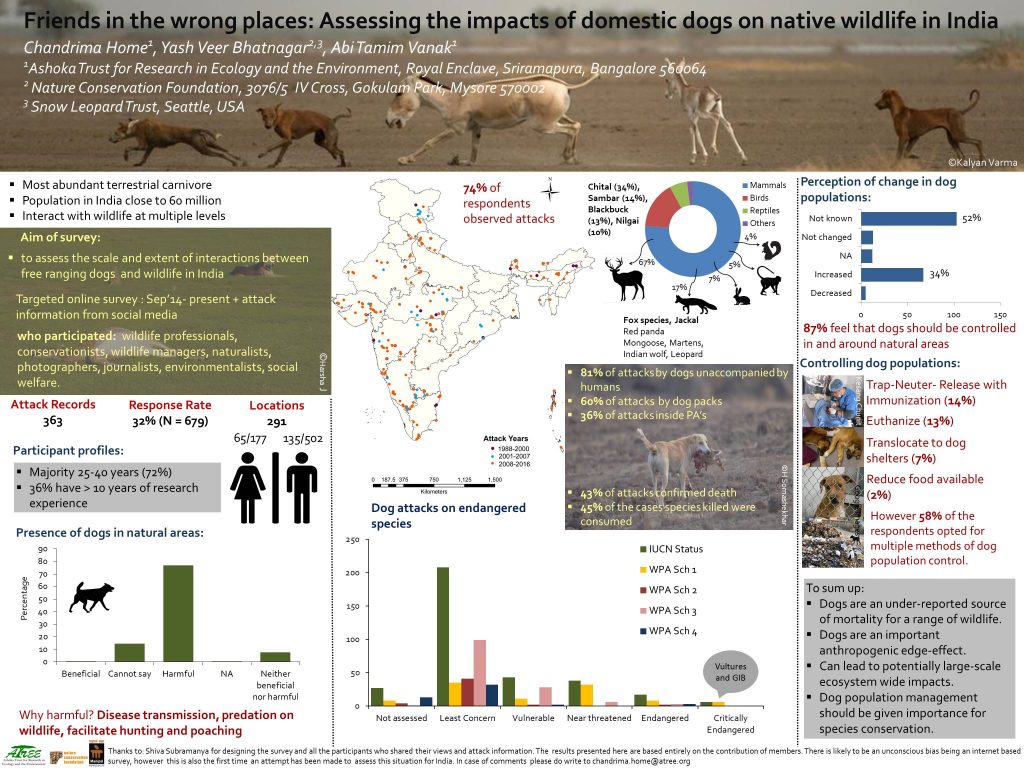In human-populated landscapes, domestic dogs (Canis lupus familiaris) are the most abundant terrestrial carnivore, with a global population close to a billion. In India, total dog population is estimated to be about 60 million. Dogs interact with wildlife at multiple levels and despite their controversial effects, global ubiquity and significant ecological roles they remain poorly understood. Although there has been growing evidence of threats posed by free-ranging dogs, very few attempts have been made to understand the impact of free-roaming dogs on native wildlife in India.
We used key informant surveys on an online platform to determine the width and depth of dog-wildlife conflict. The online survey was initiated in September 2014 and the survey consisted of a series of questions about dog-wildlife interactions, including attacks, harassment and predation by dogs. Snowball sampling increased the number of respondents over time. We also supplemented our data with information from social media.
Approximately 36% of the sampled informants participated in the online-based survey till March 2016. Nearly 74% of the respondents reported dog attacks on wildlife. The attack information from survey respondents along with pooled in responses from social media resulted in information on 363 independent attack incidents across 291 locations in India.
Mammals were targeted in 78% of the attacks with 35% of the attacks occurring inside protected areas. Ungulates comprised 67% of the attack species followed by carnivores (17%), lagomorphs (7%), primates (5%) and rodents (4%). Amongst ungulates spotted deer was the most attacked species (34%) followed by sambar (14%), blackbuck (13%) and nilgai (10%).
Amongst the birds, some critically endangered species such as vultures and Great Indian Bustard were observed to be threatened by dogs. Nearly 43% of the attacks led to death and in 45% of the cases the species were consumed. Majority of the attacks were carried out by dogs unaccompanied by humans (81%) and packs of dogs (60%).
Our study shows that dogs are an under-reported source of mortality for a range of wildlife in India, including critically endangered species. In human-dominated ecosystems, dogs are an important anthropogenic edge-effect with potentially large-scale ecosystem wide impacts and therefore their population management should be a prerogative for conservation initiatives in India.
See more posts on Conservation India about domestic dogs being a threat to wildlife.



 CI is a non-profit, non-commercial portal that aims to facilitate wildlife and nature conservation by providing reliable information and the tools needed to campaign effectively.
CI is a non-profit, non-commercial portal that aims to facilitate wildlife and nature conservation by providing reliable information and the tools needed to campaign effectively.